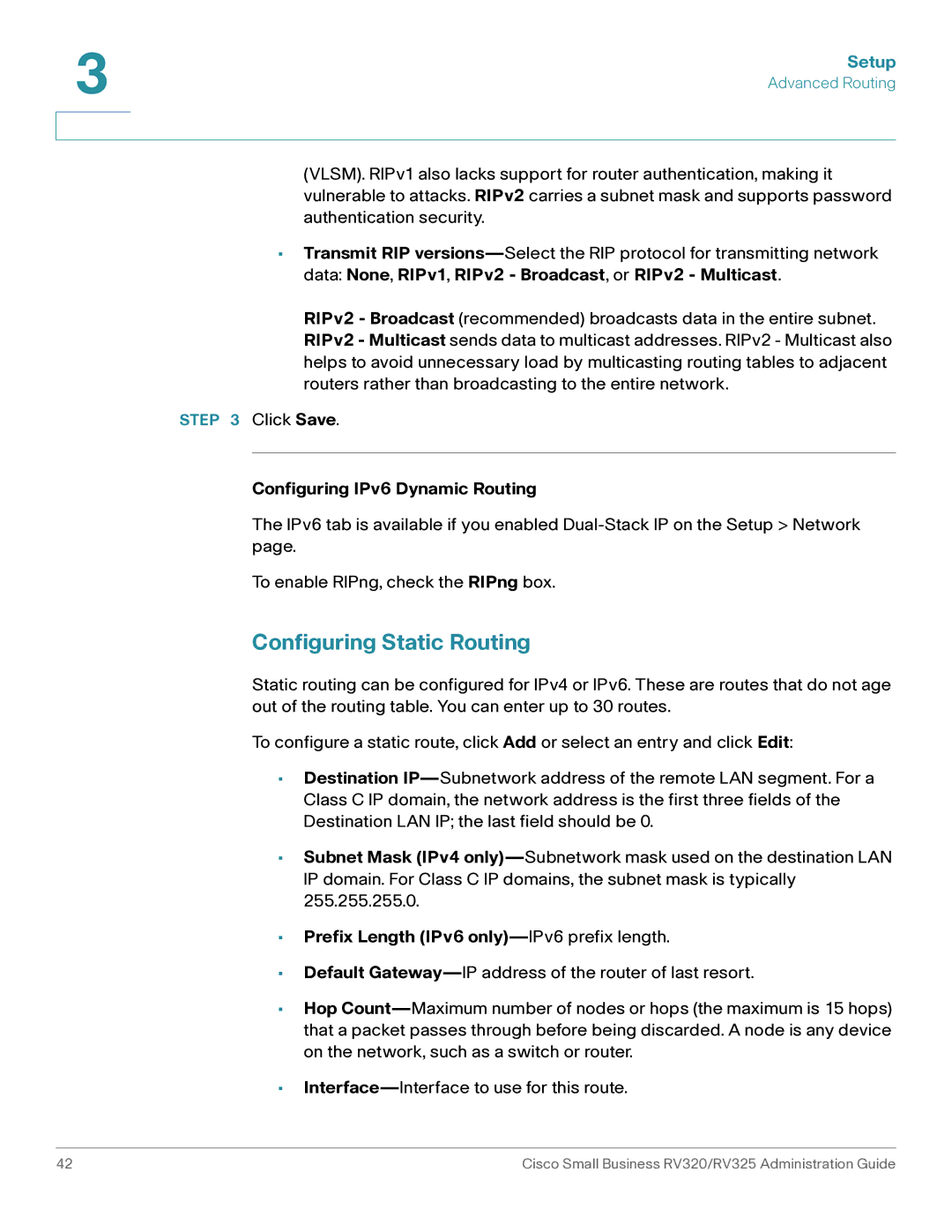
3 | Setup |
| |
| Advanced Routing |
|
|
|
|
(VLSM). RIPv1 also lacks support for router authentication, making it vulnerable to attacks. RIPv2 carries a subnet mask and supports password authentication security.
•Transmit RIP
RIPv2 - Broadcast (recommended) broadcasts data in the entire subnet. RIPv2 - Multicast sends data to multicast addresses. RIPv2 - Multicast also helps to avoid unnecessary load by multicasting routing tables to adjacent routers rather than broadcasting to the entire network.
STEP 3 Click Save.
Configuring IPv6 Dynamic Routing
The IPv6 tab is available if you enabled
To enable RIPng, check the RIPng box.
Configuring Static Routing
Static routing can be configured for IPv4 or IPv6. These are routes that do not age out of the routing table. You can enter up to 30 routes.
To configure a static route, click Add or select an entry and click Edit:
•Destination
•Subnet Mask (IPv4
•Prefix Length (IPv6 only)—IPv6 prefix length.
•Default
•Hop
•
42 | Cisco Small Business RV320/RV325 Administration Guide |
